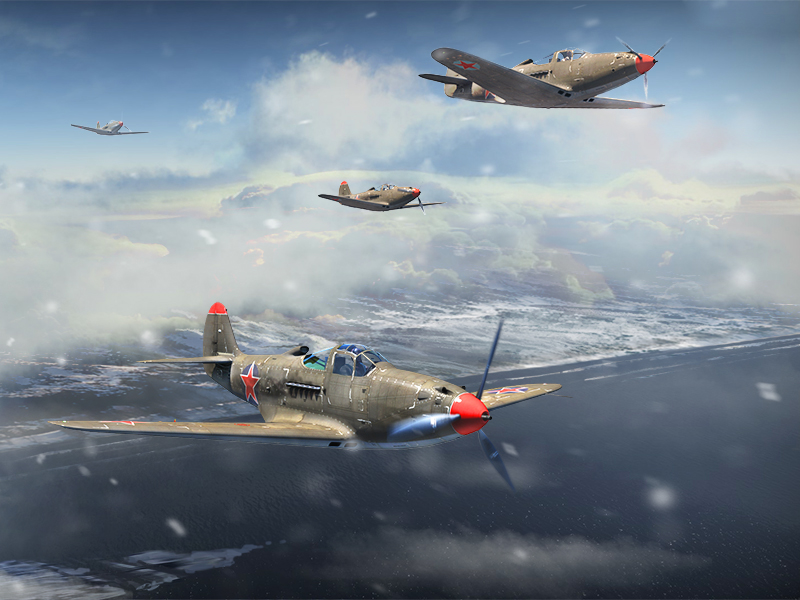
- For PC
- For MAC
- For Linux
- OS: Windows 7 SP1/8/10 (64 bit)
- Processor: Dual-Core 2.2 GHz
- Memory: 4GB
- Video Card: DirectX 10.1 level video card: AMD Radeon 77XX / NVIDIA GeForce GTX 660. The minimum supported resolution for the game is 720p.
- Network: Broadband Internet connection
- Hard Drive: 17 GB
- OS: Windows 10/11 (64 bit)
- Processor: Intel Core i5 or Ryzen 5 3600 and better
- Memory: 16 GB and more
- Video Card: DirectX 11 level video card or higher and drivers: Nvidia GeForce 1060 and higher, Radeon RX 570 and higher
- Network: Broadband Internet connection
- Hard Drive: 95 GB
- OS: Mac OS Big Sur 11.0 or newer
- Processor: Core i5, minimum 2.2GHz (Intel Xeon is not supported)
- Memory: 6 GB
- Video Card: Intel Iris Pro 5200 (Mac), or analog from AMD/Nvidia for Mac. Minimum supported resolution for the game is 720p with Metal support.
- Network: Broadband Internet connection
- Hard Drive: 17 GB
- OS: Mac OS Big Sur 11.0 or newer
- Processor: Core i7 (Intel Xeon is not supported)
- Memory: 8 GB
- Video Card: Radeon Vega II or higher with Metal support.
- Network: Broadband Internet connection
- Hard Drive: 95 GB
- OS: Most modern 64bit Linux distributions
- Processor: Dual-Core 2.4 GHz
- Memory: 4 GB
- Video Card: NVIDIA 660 with latest proprietary drivers (not older than 6 months) / similar AMD with latest proprietary drivers (not older than 6 months; the minimum supported resolution for the game is 720p) with Vulkan support.
- Network: Broadband Internet connection
- Hard Drive: 17 GB
- OS: Ubuntu 20.04 64bit
- Processor: Intel Core i7
- Memory: 16 GB
- Video Card: NVIDIA 1060 with latest proprietary drivers (not older than 6 months) / similar AMD (Radeon RX 570) with latest proprietary drivers (not older than 6 months) with Vulkan support.
- Network: Broadband Internet connection
- Hard Drive: 95 GB

x5 experience for the first battle and
30% discount for the following premium aircraft:
PBY-5a
P-39K-1
P-63A-5
Mustang Mk IA
from 6:00 GMT November 16th to 6:00 GMT November 17th (22:00 PST November 15th to 22:00 PST November 16th)
Lend-lease was an American program during World War II that helped to supply its allies. It began on March the 11th 1941, when president Roosevelt signed the then controversial Lend-Lease bill, and this continued until the last days of the war. Interest-free loans secured the delivery of various military and civil goods like metals, materials, spare parts, ammunition, fuel and lubricants, food and many others. The grand total of the American help was as high as 50 billions of USD. 60% of this was received by Great Britain and more than 20% by the USSR.
In December of 1940, the British could no longer afford to pay for supplies. On the 17th of December, Roosevelt proposed the new initiative of Lend-Lease. The United States would provide Great Britain with the supplies it needed to fight Germany, but would not request payment immediately.
 Instead, the United States would “lend” the supplies to the British, postponing payment. When payment did take place at last, the emphasis would not be on payment in USD; instead, payment would mainly take the form of a “consideration” granted by Britain to the United States. After many months of negotiation, the United States and Britain agreed, in Article VII of the Lend-Lease agreement they signed, that this consideration would primarily consist of joint action directed towards the creation of a liberalized international economic order in the post-war world.
Instead, the United States would “lend” the supplies to the British, postponing payment. When payment did take place at last, the emphasis would not be on payment in USD; instead, payment would mainly take the form of a “consideration” granted by Britain to the United States. After many months of negotiation, the United States and Britain agreed, in Article VII of the Lend-Lease agreement they signed, that this consideration would primarily consist of joint action directed towards the creation of a liberalized international economic order in the post-war world.
Lend-lease deliveries to the USSR started in the summer of 1941, as soon as the country entered the war. It was at that point that the first arctic convoy left for the northern Soviet port of Arkhangelsk, making its way through the cold waters of the Arctic Ocean. Dozens of other convoys followed it, guarded by American, British and Canadian warships. Sometimes they suffered heavy losses from German submarine attacks and air raids, like the notorious PQ-17. This famous convoy consisted of 41 merchant ships and a substantial group of warships, but nevertheless it was dispersed and near destroyed by the Germans. Only 14 ships made it to the port of Arkhangelsk.
Other important routes were the Persian corridor, the Pacific route and the famous Alsib, an airway connecting Alaska and Eastern Siberia, used to ferry American planes like the P-39 and the P-63 fighters, B-25 Mitchell bombers, A-20 attack aircraft and many others.
It is arguable if the lend-lease program was critical for the Allies success in World War II. The British government only started receiving massive and near free American help when the - critical for Britain’s survival - Battle of Britain was already over. The American deliveries covered only 4% of the USSR’s military expenses. However, the lend-lease goods were exactly what Soviet industry and the army needed the most: nonferrous metals, heavy machinery, explosives, fuel, motor-vehicles and, of course, aircraft. In these areas the American help was very noticeable. Also the role of lend-lease for the US themselves is not to be underestimated, their help to overseas allies allowed the Americans to delay their entry into the war in Europe, adjusting the economy and army for the future major clash with Germany.



